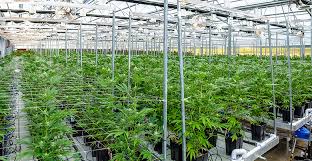In the burgeoning cannabis industry, ensuring optimal environmental conditions is vital to cultivating high-quality cannabis plants. One of the key components for achieving this is an effective HVAC (Heating Ventilation, Heating, and Conditioning) (Heating, Ventilation and Conditioning) method. Cannabis HVAC units are created to create and maintain the ideal environment for plant growth, and understanding their role and importance can greatly impact a grower’s success.
Why HVAC Systems are Essential
Cannabis plants are extremely sensitive to the environment in which they live. Factors like temperature, humidity and air quality need to be controlled with care to ensure a healthy growth rate and yields that are high. A HVAC system specifically designed for cannabis cultivation assists in controlling these variables, creating an environment that is stable and ensures the development of healthy plants and helps prevent issues like mold, mildew, and nutritional deficiencies.
Key Components of Cannabis HVAC Systems
Heating Cannabis plants thrive within an appropriate temperature range. In colder seasons or colder climates, heating systems will ensure that temperatures remain within the ideal range–typically between 70-85degF (20-30degC) for most varieties. Electric heaters and infrared heating, as well as gas-based heaters, are typically utilized, with the decision dependent on the size of the job and energy efficiency considerations.
Cooling: Excessive heat can stress plants, resulting in decreased growth and lower yields. Air conditioning units, evaporative chillers and coolers are employed to manage temperatures during periods of high heat. It’s important to select an air conditioning system that is able to manage the heat load created by grow lights and other equipment.
Ventilation: Proper air circulation is vital for plant health. Ventilation systems can help eliminate stale air, reduce humidity, and supply fresh CO2 for photosynthesis. Inline fans, exhaust fans, and ductwork are integral to maintaining a consistent flow of air and preventing the buildup of humidity and heat.
Dehumidification: Extremely high levels of humidity could cause fungal growth, as well as other issues. Dehumidifiers help maintain the ideal humidity levels, usually between 40-60%, based on the plant’s growth stage. This helps prevent the growth of mildew and mold and maintains the health of the environment.
The Air Filtration process: to preserve the quality of air, HEPA filters and carbon filters are often employed to eliminate dust, odors, and other contaminants. This is not just for the protection of plants but also helps maintain an enjoyable environment for the growers as well as nearby residents.
Energy Efficiency and Automation
Modern cannabis HVAC systems typically incorporate automation and energy-efficient technologies. Automated controls allow for the adjustment of temperature, humidity, and airflow in real-time based on data from the moment that reduce energy consumption while improving the conditions. Energy-efficient systems, like ones that use variable-speed fans as well as energy recovery ventilators, aid in to reduce operating costs while ensuring a stable and comfortable environment.
Conclusion
A well-designed grow room hvac is crucial for anyone who is serious about becoming a cannabis cultivator. By carefully managing temperatures, humidity, and the quality of the air, growers are able to create the perfect conditions for healthy plant growth and maximize the yields. Knowing the functions and components that comprise cannabis HVAC systems will to ensure that the investment will translate into high-quality cultivation and harvests.

